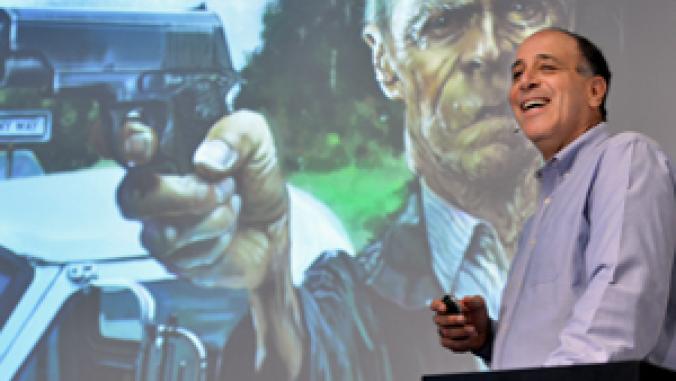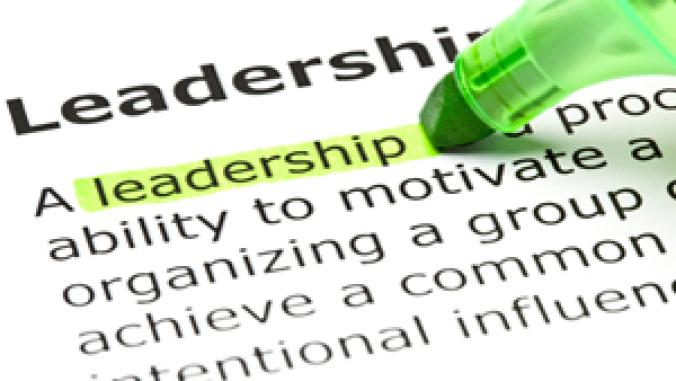Scenes from Greenbuild 2008
Sights, slices of life and sundry speeches from the U.S. Green Building Council's seventh annual international conference in Boston, which drew almost 30,000 people.

Greenbuild, the annual international conference of the U.S. Green Building Council, wound down today in Boston with 11 tours of green properties from Cambridge to Cape Cod to fill a long Saturday. The full-day trips included visits to green tech as well as historic sites, homes and schools. A list of all the tours sites during the conference can be found here. An interactive map showing the green attributes of each site is here.
The formal closing, however, was Friday with a rousing wrap-up speech by USGBC President, CEO and Founding Chair Rick Fedrizzi, who pulled together the many threads of the nearly weeklong event.
In deference to the host city as well as the momentum of green building advocacy, the banner theme of this year's gathering was "Revolutionary Green." And of the many points — from the technical to the motivational — that five days of meetings, workshops, discussion forums, plenaries, site visits and no fewer than 106 education sessions sought to address, the conference offerings were largely informed by three major questions:
-- Has the economic crisis killed the green building movement?
-- If not, how will it survive?
-- When will the movement diversify itself and its agenda to address social justice issues?
"When people ask is the green building movement going to survive the recession, you'll say we are how the economy will get back on track — with green jobs, green energy and green innovation," he said to applause and cheers. "And when people ask whether green matters in times like these, you'll quote the Archbishop Desmond Tutu who said (in his keynote address) on Wednesday that not to care about the environment is like not caring about egregious human rights violations. Our green revolution is in full play and we are clearly changing the world."
Calling this year's Greenbuild a watershed event for the green building movement, Fedrizzi said one of the bigger revelations acknowledged in the conference was a realization the movement has made about itself. "Maybe most importantly, we finally connected the dots about how integral the values of social equity are with what we do," he said.
"The social equity thread that ran through the last three days was a bright one of hope," said Fedrizzi, with a bow to author and environmental activist Van Jones' vision of a vibrant green collar economy and the work of MacArthur Fellow Majora Carter, whose founding of Sustainable South Bronx has fueled a broader drive to reclaim communities.
Greenbuild's video of Fedrizzi's speech and the closing plenary, "Science in Sustainability," can be viewed here. The two-hour closing presentation features a discussion with scholar, naturalist and Pulitzer Prize winner E.O. Wilson and Janine Benyus, the founder of the Biomimicry Institute and cofounder of the Biomimicry Guild. NPR president Kevin Klose moderated the talk.
The talks by Jones, Carter and other major speakers at Greenbuild can be found here.
Wit, Wisdom and a Plea
The call for a broader vision came early in the conference from Fedrizzi and Nobel Peace Laureate Tutu who in their opening remarks praised the gathering and the green movement as a whole for being agents of transformative change. The two also urged adherents to push beyond their boundaries and expand their vision of the environment and the people in it.
In a talk that blended gentle wit, exuberance and a cadence akin to the pulpit, Tutu told an estimated audience of 10,000, "What a wonderful pleasure it is to address this mammoth crowd."
 |
To be able to do so, he said, is to "behold an incredible turnaround" — a phrase he also used to describe a change in the U.S. political climate, the moral climate and a markedly different view today of people committed to bettering the environment.
" 'Oh, dear, not another weirdie,' " he said, was the reception once given to anyone who espoused a concern for the Earth. To do so was to be "viewed as part of an eccentric, lunatic fringe."
Tutu credited the environmental movement for bringing about the change and for being a major influence in the success thus far of President-elect Barack Obama. "What you did here in this movement helped usher in a new era," he said. "You are fantastic people."
With his praise came a plea for humanity.
"I have a dream — Martin Luther King had a dream, I have one too — I have a dream that my children everywhere will know they are members of one family," he said. "Please, please, please — please help me realize this dream."
Impressions from the Crowd
Pockets of the audience rose applauding throughout the talk and they stood almost as one at the end — as much for Fedrizzi and Tutu as for the joyous performance of the African Children's Choir.
 |
As the crowd eddied to the exits, Paki Taylor said the address captured the sense of change and growth within the organization.
"The USGBC is really on the right track here regarding people, poverty, social justice and equality," said Taylor, the immediate past president of USGBC North Florida Chapter and a civil engineer.
The Boston conference was the fourth annual USGBC gathering Taylor had attended and the first to convey such a sense of breadth in its mission, she said.
Coming from a background of engineering, she had "always been a little skeptical about the extent to which architecture can address human problems," she said. "Perhaps, though, through this movement we can now find creative solutions to social issues and form more partnerships inside and outside the movement to effectively do so."
Greenbuild by the Numbers
Marsha Poon, who works with permits for the Seattle planning department, was impressed by the opening program and astounded by the sheer size of the conference, her first.
"I'm overwhelmed," she said. 'There're so many people."
Early projections put attendance at 24,000.
According to Fedrizzi, another 2,000 walked in for registration on Tuesday, the evening the expo portion of the program opened, and still more had arrived by Friday. The attendees came from 80 countries and included representatives from 33 green building councils worldwide in addition those in every U.S. state.
 |
Poon didn't look too keen on the prospect of rubbing elbows with jostling conventioner-goers in the exhibit hall. "I'm more interested in finding out what other jurisdictions are doing with their local green building programs," she said.
Stats on previous Greenbuild conferences can be found here.
Happiness is a Busy Booth
Liz Milam, a member of the Rosendin Electric team occupying booth No. 2763 in the huge exhibit hall, was ecstatic about all the foot traffic. As an HR representative for the largest employee-owned electrical contractor in the country, Milam's trip to Greenbuild was her first. More than 500 had stopped in at her company's booth.
"This is just huge," she said. "It's just great."
 |
Roger McGuire, architectural development manager for Dunbarton Door and Entry Systems, was also pleased by the turnout. This year's event made his fifth annual Greenbuild, and he could remember when "there were just enough exhibitions for a hotel conference room, in fact that's just what they did."
Though now a sprawling affair, the tradeshow has improved each year, and the event seems to get more organized, he and others said. Better organization from layout to the registration process was also noticed by many.
One thing didn't please McGuire: lunch service at a restaurant next door to the convention center. It took more than 25 minutes for his order of clam chowder to reach him, he had to inquire about it twice and when it finally arrived, the waiter who brought it was surly. The server did not get a tip.
Battling Greenbuild Bonk
With all there was to see and do, it was easy even for the initiated to succumb to a species of the Stendhal Syndrome. Call it Greenbuild Bonk.
It's that lightheadedness that can come in the mid to late afternoon after a day on the go in meetings, at panels, networking and exploring the vast tradeshow floor.
Staying hydrated was easy, there were water dispensers throughout the main exhibit hall. Attorney Shari Shapiro said it was also important for convention-goers to remember another basic principle for people constantly on the move: "Don't forget to eat, and get enough to eat."
 |
"You need to do that," advised Shapiro, an expert in green building law and a guest columnist and blogger for GreenerBuildings. "If you don't you'll start seeing pink elephants in the afternoon."
Shapiro also complimented the convention-organizers on their foresight in providing a "Networking Gardening" in the middle of the tradeshow floor. With inviting chairs and benches in soothing earth tones, greenery and a few low tables, the area was a comforting oasis amid the bustle.
"That was really smart," Shapiro said.





